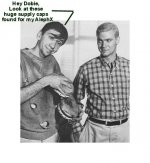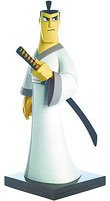I was thinking about putting two Alephs P in one box together with passive low pass/high pass in front of each one of them ,in the same box.Then either make output attenuators for each of the preamps setting the separate gain and the one master volume control behind this,or use pots that set inside gain of the circuit to set each idividual gain and one master volume control at the output common to both preamps.
Is there any chance that this would work as two way active crossover/preamp?
Bartek
Is there any chance that this would work as two way active crossover/preamp?
Bartek
Here's Dobie's view on work.Nelson Pass said:
/pass/- uses the Maynard G. Krebs definition of "work"

"I don't have anything against work. I just figure, why deprive somebody who really loves it."
Attachments
I used to think there was science involved in choosing amplifiers for multi-amp systems. I got over it.
Some things to think about:
--Really about the only thing that still holds from what I used to think I knew was having adequate power available for each driver. I still think in terms of equal power per octave. N.B.: Every time I say that, thirty-seven people come crawling out of the woodwork with other rules of thumb; some of them based on 'science.' That's cool. You pays your money and you takes your chances. Don't blame me if you clip your top end amp and fry a tweeter.
The caveat to this is if you're playing games with driver eq, e.g. low frequencies. Power requirements can go way, way up. Fast. Plan accordingly.
--Using similar topologies will tend to reduce imaging anomalies. Case in point--my tube amps tend to place an image further back in the soundstage than the Alephs. Interesting. It can be disconcerting if you've got an instrument that climbs the scale and jumps backwards or forwards a foot or two when it hits the crossover point. Kinda like having mismatched speakers in a 5.1 system.
--If you want to mess with feedback, do it with speakers you intend to use for a while. You're not voicing an amplifier, you're voicing an entire system. More feedback tends to tighten bass, which is generally regarded as good. It also tends to brighten the treble. More feedback can put sparkle in a dull sounding tweeter. It can also lead to a harsh, 'hi-fi' sound. Not so good.
Somewhere down the line, people started using the word 'accurate' to describe an overly etched top end. It ain't. There's a presumptuous taking-the-moral-high-road aspect to this that I find annoying. Take your time in evaluating changes. Things that sound good at first may get old after a while. Don't be shy about going back to the way you had it set before.
--Take notes every time you change things. Where it's set. How it sounds.
--As a general rule of thumb, tubes--if used--are generally best for mid range. Solid state for bass. In a triamp setup, the tweeter amp position is up for grabs, depending on the driver and the listener. In the last year, I've had solid state on my ribbons, then tubes, then back to solid state.
--Rules are made to be broken. I was fiddling cables and got the wrong ones in the wrong place. I thought I had my tube amps on the mids and a Threshold on the woofer panels. Sat down. Listened. The most gorgeous sound I'd ever heard out of my woofers. You can guess what happened--I had the tube amps on the woofers. What I immediately wanted to do was sit down and build another pair of tube amps, but it was out of the question; those things were way too expensive to build. What to do? Well, the Aleph 2 I'd built was a remarkably tube-ish sounding amplifier. Why not build a second pair? So I did. In practice, it's nearly as good as the tube amp on the woofers, for a whole lot less money. No, I haven't tried the Alephs on the subs. Not enough power. I'm doing things to the signal and need more than 100W per tower.
--Clipping is your worst enemy. Many people undersize an amplifier when they biamp, then blow a driver. Be realistic about power requirements for your listening habits and the efficiency of your drivers.
--Purely as a reliability issue, woofers are more tolerant of clipping than tweeters. By a factor of about ten zillion.
--Watch out for amps that 'pop' or 'thump' when turned on or off. Woofers don't mind. It can kill tweeters. That's not to say that you can't use such an amp on your tweeter--just put in a DC blocking cap. If you want to be clever about it, you can size the cap to be a pole in your crossover, but you're wasting power by amplifying the signal, then throwing it away again. That's part of why you're biamping--you want to save that power. Your choice.
--A multiamp system is a wonder to hear if it's properly set up. Enjoy.
Grey
Some things to think about:
--Really about the only thing that still holds from what I used to think I knew was having adequate power available for each driver. I still think in terms of equal power per octave. N.B.: Every time I say that, thirty-seven people come crawling out of the woodwork with other rules of thumb; some of them based on 'science.' That's cool. You pays your money and you takes your chances. Don't blame me if you clip your top end amp and fry a tweeter.
The caveat to this is if you're playing games with driver eq, e.g. low frequencies. Power requirements can go way, way up. Fast. Plan accordingly.
--Using similar topologies will tend to reduce imaging anomalies. Case in point--my tube amps tend to place an image further back in the soundstage than the Alephs. Interesting. It can be disconcerting if you've got an instrument that climbs the scale and jumps backwards or forwards a foot or two when it hits the crossover point. Kinda like having mismatched speakers in a 5.1 system.
--If you want to mess with feedback, do it with speakers you intend to use for a while. You're not voicing an amplifier, you're voicing an entire system. More feedback tends to tighten bass, which is generally regarded as good. It also tends to brighten the treble. More feedback can put sparkle in a dull sounding tweeter. It can also lead to a harsh, 'hi-fi' sound. Not so good.
Somewhere down the line, people started using the word 'accurate' to describe an overly etched top end. It ain't. There's a presumptuous taking-the-moral-high-road aspect to this that I find annoying. Take your time in evaluating changes. Things that sound good at first may get old after a while. Don't be shy about going back to the way you had it set before.
--Take notes every time you change things. Where it's set. How it sounds.
--As a general rule of thumb, tubes--if used--are generally best for mid range. Solid state for bass. In a triamp setup, the tweeter amp position is up for grabs, depending on the driver and the listener. In the last year, I've had solid state on my ribbons, then tubes, then back to solid state.
--Rules are made to be broken. I was fiddling cables and got the wrong ones in the wrong place. I thought I had my tube amps on the mids and a Threshold on the woofer panels. Sat down. Listened. The most gorgeous sound I'd ever heard out of my woofers. You can guess what happened--I had the tube amps on the woofers. What I immediately wanted to do was sit down and build another pair of tube amps, but it was out of the question; those things were way too expensive to build. What to do? Well, the Aleph 2 I'd built was a remarkably tube-ish sounding amplifier. Why not build a second pair? So I did. In practice, it's nearly as good as the tube amp on the woofers, for a whole lot less money. No, I haven't tried the Alephs on the subs. Not enough power. I'm doing things to the signal and need more than 100W per tower.
--Clipping is your worst enemy. Many people undersize an amplifier when they biamp, then blow a driver. Be realistic about power requirements for your listening habits and the efficiency of your drivers.
--Purely as a reliability issue, woofers are more tolerant of clipping than tweeters. By a factor of about ten zillion.
--Watch out for amps that 'pop' or 'thump' when turned on or off. Woofers don't mind. It can kill tweeters. That's not to say that you can't use such an amp on your tweeter--just put in a DC blocking cap. If you want to be clever about it, you can size the cap to be a pole in your crossover, but you're wasting power by amplifying the signal, then throwing it away again. That's part of why you're biamping--you want to save that power. Your choice.
--A multiamp system is a wonder to hear if it's properly set up. Enjoy.
Grey
- Status
- This old topic is closed. If you want to reopen this topic, contact a moderator using the "Report Post" button.
- Home
- Amplifiers
- Pass Labs
- Bi-amping set up?



